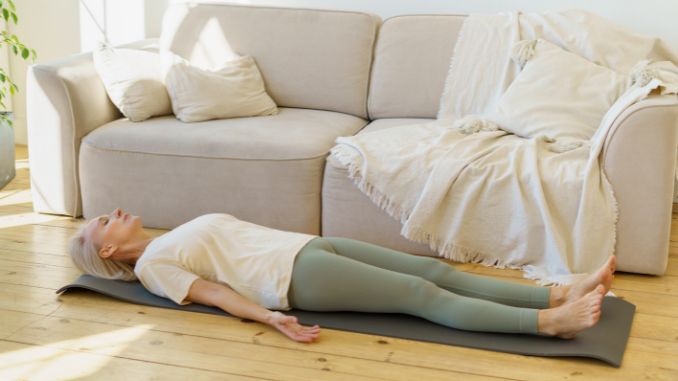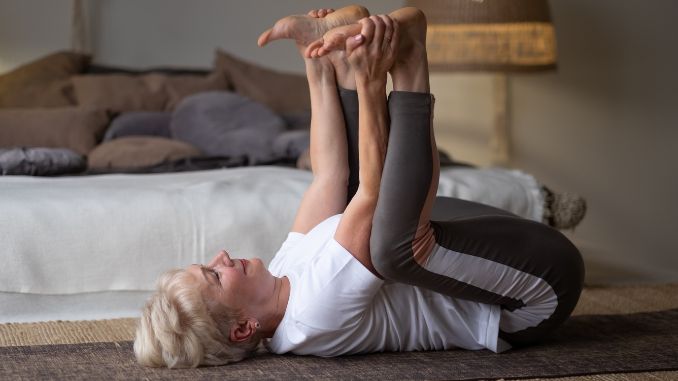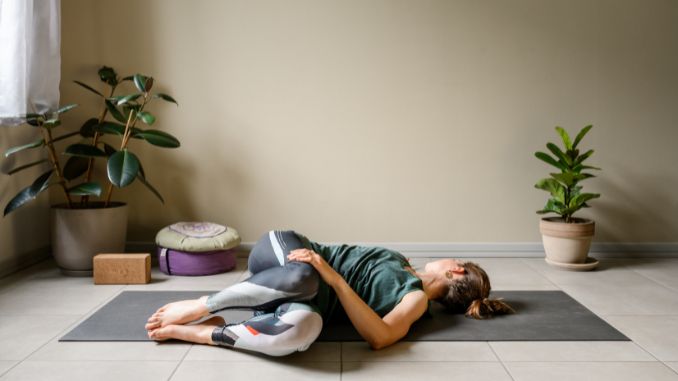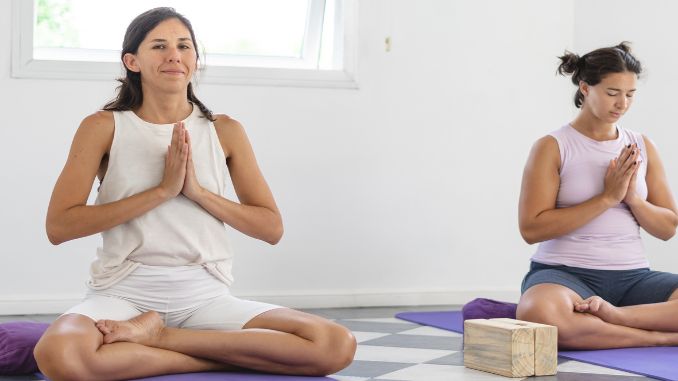Yoga Nidra For Sleep: A Restful Journey to Sweet Dreams
Drift away into a restful slumber with the power of Yoga Nidra, an ancient practice that can help you overcome sleep troubles. Often called "yogic sleep," Yoga Nidra is a guided meditation method that induces deep relaxation while keeping you conscious. By systematically exploring sensations and breath awareness, it calms the mind, eases bodily tension, and paves the way for peaceful sleep. This article explores the realm of Yoga Nidra as it relates to sleep, unraveling its benefits, techniques, and bedtime integration tips. Discover how it can alleviate stress, anxiety, and insomnia, leaving you refreshed and revitalized each morning. Bid farewell to restless nights and embrace a well-rested mind and body with Yoga Nidra.
What is Yoga Nidra for Sleep?
Yoga Nidra, derived from ancient yogic texts, is a powerful practice that allows you to experience deep relaxation while maintaining awareness. It is often practiced lying down in a comfortable position, such as Savasana (Corpse Pose), and involves following a guided meditation that takes you through different stages of relaxation.
During a Yoga Nidra session, the practitioner is led through a series of verbal instructions that encourage body awareness, breath awareness, and visualization. The aim is to enter a state of deep relaxation, where the mind becomes calm and the body experiences profound rest.
Benefits of Yoga Nidra for sleep
The benefits of Yoga Nidra extend far beyond a good night's sleep. By regularly practicing Yoga Nidra, you can experience a wide range of positive effects on your physical, mental, and emotional well-being.
One of the primary benefits of Yoga Nidra for sleep is its ability to reduce stress and anxiety. The practice activates the relaxation response in the body, which helps counteract the effects of chronic stress. By engaging the parasympathetic nervous system, Yoga Nidra promotes deep relaxation and allows the body to release tension, leading to a calmer mind and a more peaceful sleep.
Furthermore, Yoga Nidra can help alleviate insomnia by regulating the sleep-wake cycle. The practice helps synchronize the brain waves, calming the mind and preparing it for sleep. With regular practice, you may find that falling asleep becomes easier, and you experience a more restful and uninterrupted sleep throughout the night.
Additionally, Yoga Nidra has been found to enhance creativity, improve focus and concentration, boost immune function, and promote overall well-being. Its benefits extend beyond the realm of sleep, making it a valuable practice to incorporate into your daily routine.
How Does Yoga Nidra Promote Deep Relaxation?
Yoga Nidra promotes profound relaxation by employing a combination of techniques targeting the body, breath, and mind. It systematically guides you through various stages of relaxation, releasing physical and mental tension, ultimately leading to a state of deep rest.
The practice initiates by focusing on different body parts, deliberately relaxing each one from head to toe, alleviating physical discomfort and fostering overall relaxation.
Attention then shifts to the breath, calming the mind and anchoring it in the present moment. This breath awareness reduces mental chatter, promoting inner calm.
Furthermore, Yoga Nidra employs visualizations and affirmations to cultivate positive emotions and intentions, redirecting focus from worries to serenity, enhancing relaxation.
These techniques create the ideal conditions for deep relaxation, accessing a state between wakefulness and sleep, allowing body and mind to rejuvenate and restore themselves.
The Science Behind Yoga Nidra for Sleep
The benefits of Yoga Nidra for sleep have been supported by scientific research. Studies have shown that practicing Yoga Nidra can decrease cortisol levels, the hormone associated with stress, and increase the production of melatonin, the hormone responsible for regulating sleep-wake cycles.
Research has also demonstrated that Yoga Nidra can improve the quality of sleep by increasing the length of deep sleep and reducing the time spent in lighter stages of sleep. This means that by incorporating Yoga Nidra into your bedtime routine, you can enjoy a more restorative sleep and wake up feeling refreshed and rejuvenated.
Furthermore, studies have found that Yoga Nidra can decrease anxiety levels and improve overall well-being. It has been shown to activate the prefrontal cortex, the part of the brain responsible for executive functions such as decision-making and emotional regulation. This activation leads to a greater sense of calm and emotional stability, contributing to better sleep quality.
The scientific evidence supporting the effectiveness of Yoga Nidra for sleep is compelling, highlighting its potential as a natural and holistic approach to addressing sleep issues.
How to Do Yoga Nidra for Sleep?
Practicing Yoga Nidra for sleep is simple and accessible to anyone, regardless of their level of experience with yoga or meditation. By following these steps, you can create a conducive environment for deep relaxation and enjoy a peaceful night's sleep.
- Find a comfortable space: Choose a quiet and comfortable space where you can lie down without any distractions. Ensure that the temperature and lighting are conducive to relaxation.
- Set an intention: Before starting the practice, set an intention for your Yoga Nidra session. It could be as simple as wanting to experience deep rest or cultivating a sense of inner peace.
- Get into a comfortable position: Lie down on your back in Savasana (Corpse Pose) or any other comfortable position that allows your body to fully relax. Use props such as pillows or blankets to support your body if needed.
- Follow a guided meditation: You can find guided Yoga Nidra meditations online or through various apps. Choose one that resonates with you and follow the instructions, allowing yourself to fully surrender to the practice.
- Practice deep relaxation: As you listen to the guided meditation, focus on the instructions and allow your body and mind to relax deeply. Follow along with the breath awareness, body scanning, and visualizations, allowing yourself to fully immerse in the experience.
- Gradually transition to sleep: Towards the end of the practice, you may find yourself transitioning into sleep naturally. Embrace this transition and allow yourself to drift off into a peaceful slumber.
By incorporating these steps into your bedtime routine, you can harness the power of Yoga Nidra to promote deep relaxation and achieve a restful night's sleep.
Yoga Nidra for Sleep
While Yoga Nidra can be practiced in any comfortable position, certain poses and sequences can enhance its effectiveness for sleep. Here are a few poses and sequences you can try:
1. Breaths

Lie on your back with your knees bent and feet flat on the floor. Move your ankles slightly to the side, then let your knees fall inward. Place your arms at your sides or place one hand on your chest and the other on your belly. Relax your upper body and close your eyes. Hold the position and bring awareness to your breathing as you take a few deep belly breaths, in through your nose and then out through your mouth. Complete with 10 full breaths.
2. Corpe Pose

Lie on your back on the floor, maintaining good alignment with your head, shoulders, hips, and legs. Engage your core. Extend your arms out at your sides with your palms facing upward. Close your eyes and relax your body. Hold this position for several deep belly breaths, in through your nose and out through your mouth.
3. Bound Angle Pose

Begin in an upright sitting position on the floor, while maintaining good alignment with your head, shoulders, and hips. Bend your knees out to the sides, bringing the soles of your feet together. Then, hold onto your toes with both hands and pull your heels closer toward you, elongating your spine. Hold this position for a couple of seconds. Relax and repeat the movement.
4. Legs Up The Wall Pose

Lie on your back on the floor with your knees bent and feet flat on the floor, relaxing your upper body. Place your hands on your abdominal area. Engage your core. Slightly bend your knees and raise both legs up against the wall. To intensify the stretch, move your seat closer to the wall, keeping your legs straight. Hold this position for several seconds. Close your eyes and take several deep belly breaths, in through your nose and out through your mouth. Relax and return to the starting position.
5. Child's Pose
 Begin in an upright kneeling position with your knees wider than the shoulder-width apart and your big toes touching each other. Engage your core. Shift your hips back to your feet and extend your arms in front. Drop your forehead down, relaxing your mid-back area for a light stretch. Then, take a couple of deep belly breaths through your nose and out through your mouth. Hold this position for a few seconds. Relax and return to the starting position.
Begin in an upright kneeling position with your knees wider than the shoulder-width apart and your big toes touching each other. Engage your core. Shift your hips back to your feet and extend your arms in front. Drop your forehead down, relaxing your mid-back area for a light stretch. Then, take a couple of deep belly breaths through your nose and out through your mouth. Hold this position for a few seconds. Relax and return to the starting position.
6. Happy Baby Pose

Lie on your back with your knees bent and feet flat on the floor, relaxing your upper body. Lift your legs and hold the soles of your feet with each hand, pulling down toward the shoulders with your knees wide apart. Afterward, hold the position for several deep belly breaths, in through your nose and out through your mouth.
To intensify this exercise, you can gently rock your lower spine from side to side. Relax and return to the starting position.
7. Spinal Twist

Lie on your back, your knees bent, and your feet flat on the floor, hip-width apart. Spread your arms at your side, while relaxing your upper body. Then engage your core, and twist through the lower back, pelvis, and spine to bring both knees to one side. After that hold this position for several deep belly breaths, in through your nose and out through your mouth. Then return to the starting position and repeat the movement on the opposite side.
To intensify this movement, turn your head to the opposite side of your knees.
8. Supine Butterfly Pose

Lie on your back with your knees bent and feet flat on the floor. Also, place one hand on your chest and the other hand on your belly. Furthermore, engage your core and open your knees to the side, bringing the soles of your feet together. Finally, hold the position for several deep belly breaths, in through your nose and out through your mouth.
9. Full Body Stretch

Lie on your back on the floor, maintaining good alignment with your head, shoulders, hips, and legs. And then engage your core and bring your arms overhead, reaching as you stretch your legs long. Finally, hold this position for several deep belly breaths, in through your nose and out through your mouth.
10. Lotus /Prayer Pose

Begin in an upright sitting position with your legs crossed in front of your body, maintaining good alignment with your head, shoulders, and hips. Next, bring your left ankle over the top of your right shin by your hip crease. And then, press your palms together in a prayer position at chest height. Close your eyes and hold the position for several deep belly breaths, in through your nose and out through your mouth.
How to Incorporate Yoga Nidra into Your Bedtime Routine
Incorporating Yoga Nidra into your bedtime routine is a simple and effective way to promote better sleep. Here are some tips to help you make Yoga Nidra a consistent part of your nighttime ritual:
- Set a regular schedule: Choose a specific time each night to practice Yoga Nidra. Consistency is key in ax and prepare for sleep.
- Create a calming environment: Dim the lights, minimize noise, and create a serene space that supports relaxation. You can use essential oils, candles, or soft music to enhance the soothing ambiance.
- Limit screen time before bed: Avoid using electronic devices at least an hour before bedtime. The blue light emitted by screens can interfere with your sleep-wake cycle and make it harder to fall asleep.
- Practice gentle yoga or stretching: Before starting your Yoga Nidra practice, consider incorporating some gentle yoga poses or stretching exercises to release physical tension from the body. This can further enhance the relaxation and sleep-promoting effects of Yoga Nidra.
- Wind down with a guided meditation: Consider following a guided meditation or relaxation exercise before starting your Yoga Nidra practice. This can help quiet the mind and create a smooth transition into the deep relaxation of Yoga Nidra.
By incorporating these tips into your bedtime routine, you can create a peaceful and conducive environment for practicing Yoga Nidra and enjoying a restful night's sleep.
Yoga Nidra Resources and Guided Practices
If you're new to Yoga Nidra or looking for guided practices to enhance your sleep, there are numerous resources available to help you get started. Here are a few recommendations:
- Online platforms: Websites such as YouTube, Insight Timer, and Yoga International offer a wide range of free Yoga Nidra meditations and guided practices specifically designed for sleep. Explore different teachers and styles to find the ones that resonate with you.
- Mobile apps: There are several mobile apps dedicated to meditation and sleep that provide guided Yoga Nidra practices. Some popular options include Headspace, Calm, and Insight Timer. These apps often offer a variety of sleep-focused meditations and relaxation exercises.
- Yoga Nidra workshops and classes: Consider attending a Yoga Nidra workshop or class in your local community or online. These sessions are led by experienced teachers who can guide you through the practice and offer personalized guidance.
- Books and recordings: There are several books and recordings available that provide detailed instructions and scripts for practicing Yoga Nidra. Some notable titles include "Yoga Nidra: The Art of Transformational Sleep" by Kamini Desai and "Yoga Nidra: A Meditative Practice for Deep Relaxation and Healing" by Richard Miller.
Remember, the key is to explore different resources and find the ones that resonate with you. Experiment with different guided practices and teachers until you find the ones that best support your sleep and overall well-being.
Conclusion: Embracing the Restorative Power of Yoga Nidra for a Peaceful Night's Sleep
Yoga Nidra offers a restful journey to sweet dreams, providing a natural and effective approach to improving sleep quality. By practicing Yoga Nidra, you can experience deep relaxation, release tension from the body, and calm the mind, setting the stage for a peaceful night's sleep.
The benefits of Yoga Nidra extend far beyond sleep, offering a holistic approach to overall well-being. It can help reduce stress, alleviate anxiety, enhance creativity, and promote emotional stability. By incorporating Yoga Nidra into your bedtime routine, you can transform your sleep and wake up feeling refreshed and rejuvenated.
So, say goodbye to restless nights and embrace the transformative power of Yoga Nidra. Embark on a restful journey to sweet dreams and awaken to a new level of vitality and inner peace.

